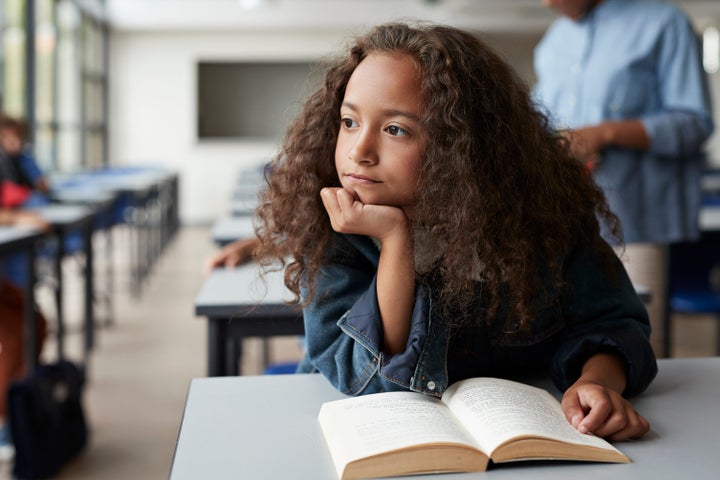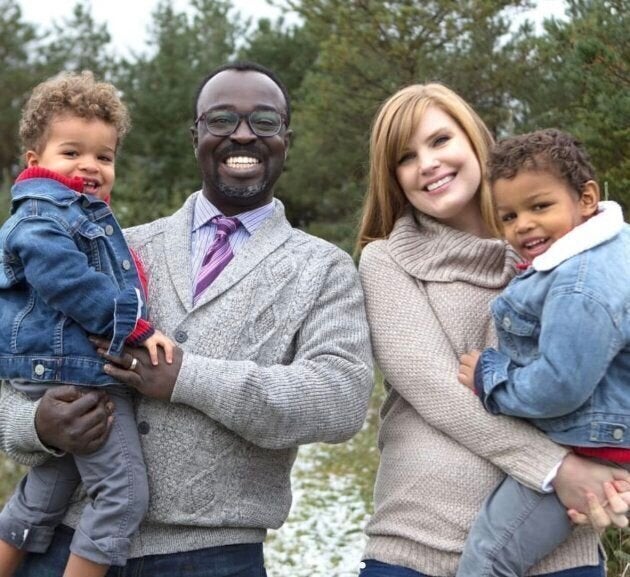
When Heather Hamilton’s son was called the N-word at school this year, it wasn’t the first time.
As the white mother of three biracial boys, there had been at least four other racially charged incidents that the Toronto-area mother had to address. Racism at her son’s school had become too common of an occurrence.
The painful and sensitive topic of race is of particular importance for parents like Hamilton who struggle to provide education, support, and advocacy for their biracial children who may be experiencing difficulties at school.
As often being one of very few – if any – visible minorities in class, these children’s feelings of isolation and being “othered” is palpable. “With very few other Black students [in the school], … my kids feel singled out or different,” Hamilton, 46, told HuffPost Canada.
WATCH: Black Canadians unpack the weight of the N-word. Story continues below video.
Although Black History Month is now celebrated in many schools each February, Hamilton and other parents feel there is still a long way to go.
“My experience has been that only select teachers do anything related to Black History Month,” she said. And when it’s done, it’s “usually when my kids are in the class. We have only three or four black families at school. The extent to which Black History is taught is really up to teacher discretion.”
For this mother, making sure that her children are seen and heard for not only Black History Month, but throughout the year, is a challenge.
“I think that when my children have been in the class, [Black History Month] has been mentioned or touched on. When they aren’t in the classes, I have doubts that it’s even acknowledged at all.”
- Heather Hamilton
Hamilton believes that a more comprehensive Black History Month curriculum needs to be implemented.
In her opinion, the status quo is not up to par. “I think that when my children have been in the class, [Black History Month] has been mentioned or touched on,” she says. “When they aren’t in the classes, I have doubts that it’s even acknowledged at all.”
According to 2016 census data, close to 1.2 million Canadians identified as Black. As the population continues to grow, so too will a new cohort of biracial children to whom their history and self-perception will be increasingly shaped in the classroom.
Casey Palmer, a Toronto-based father of two biracial boys, ages six and four, said he’s made a concentrated effort to make sure his kids understand their history – whether it’s learned at school or at home.
Casey, 36, who is Black, and his wife Sarah, who is white, know that their perspectives as parents are based on their personal experiences.

“I don’t remember how Black History Month was taught, and maybe that’s the point,” Palmer told HuffPost Canada.
When Black History Month started being taught in Canadian schools, “I was one of three Black kids in a school of hundreds. I don’t know how often it came up … it was never a huge part of my education.”
While Black History Month has been part of most Canadian school curricula since 1995, the extent to which children who identify as Black or biracial see themselves represented is limited.
Palmer got the impression that Black history was an insignificant footnote to Canada’s history, based on what he was learning at school. “From the lack of teaching in Black history that I got, I just feel like it wasn’t important to anyone because we’ve forever been an afterthought in the history books,” he says.
WATCH: 11-year-old is the first Black lead in the New York City Ballet’s “The Nutcracker.” Story continues below video.
By 2036, racialized people will represent an estimated 48 per cent of Ontario’s population, but this statistic is not represented in the province’s classrooms. A 2011 survey revealed that the teacher diversity gap in the province was akin to similar numbers found in the United States.
For this reason, Palmer has made a concentrated effort to encourage learning about Black history both in and out of school. His online series, “Live From the 3.5,” profiles experiences of Black Canadians, and their views on being Black in Canada.
“Educating on our history is only one part of the puzzle,” he says.
“Knowing that the kids will still be Black to a degree no matter whatever else gets mixed in, I’ve bought plenty of books both fiction and not, with Black leads and telling Black stories so they can feel empowered by the information I give them.”
Black history is about a lot more than slavery
Knowledge is power and education is, therefore, the key. Similar to Palmer, Jackie Gillard, 49, thinks it’s crucial for Black and biracial children to not only see themselves represented in schools, but to learn the positive contributions that Black people have historically provided to the country.
Gillard’s daughter, who is Black, has two white parents who are committed to making sure their daughter understands her Black history. While she appreciates the efforts made by schools during Black History Month, Gillard would like to see an expansion in the curriculum.
“I think sometimes there is a fixation on the slavery aspect of Black history. It’s a critical component, but it’s not all there is,” Gillard told HuffPost Canada. “I like when heroes are discussed, both of the enslaved people era and afterwards.”
WATCH: What the future holds for Black Canadians. Story continues below video.
The complex and sensitive topic of race must be fully addressed in order for real learning and positive changes to occur, Gillard believes. Beyond slavery, Black people have to also contend with a number of other very painful issues related to their skin colour.
“I really think schools need to create a curriculum regarding race, racism, white privilege, white supremacy, micro-aggressions, and the underlying themes of why we recognize Black history.”
Proactivity is one of the ways that parents of Black and biracial kids can address the dearth in teachings related to this subject. Hamilton realized this early on and did just that.
“We actually started the recognition of BHM at my son’s school when he was in Grade 3. Our family led a discussion about Black history, discussed inventions created by Black people, and my son wrote and performed a rap about Martin Luther King.” Watch his performance below:
After the school board was notified of her son’s experience, an expert on Black history and race in Canada was brought in.
“He came to speak to the Grade 7 and Grade 8 students. They reviewed the N-word, the history, why it is never OK for anyone who isn’t Black to say it, and the impact on someone who hears it. It was really powerful for the students,” Hamilton said.
Also on HuffPost: